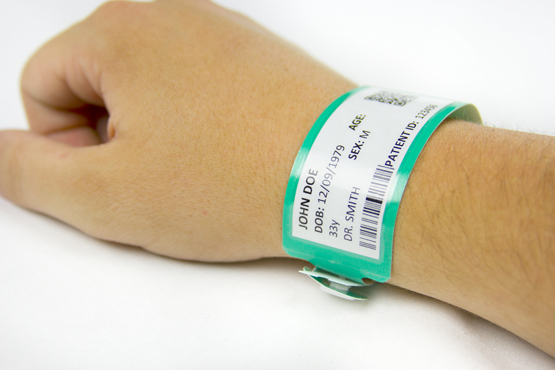How a Patient Identification Band Can Help Prevent Identity Mix-ups in Healthcare Settings
How a Patient Identification Band Can Help Prevent Identity Mix-ups in Healthcare Settings
Blog Article
How Patient Identification Band Plays a Critical Duty in Patient Monitoring and Care
Patient Identification bands act as a necessary gear in the intricate machinery of healthcare systems, serving as a protect versus clinical errors. As the frontline tool for validating Patient identity, these bands underpin critical procedures from providing the appropriate medication to making certain the right individual undertakes the designated treatment. The extensive effect of such an ostensibly easy tool on Patient safety, experience and outcomes may stun numerous, leaving one to contemplate the possible advancements and technologies that could further enhance their effectiveness.

Comprehending the Essentials of Patient Identification Bands
In spite of the simplicity of their look, Patient Identification bands offer a vital duty in medical care settings. They usually show the Patient's full name, day of birth, and an one-of-a-kind Identification number, serving as the primary source of Patient Identification - patient identification band. The usage of these Identification bands is considered an universal protocol in health care, intended at making certain Patient security and precision of treatment delivery.
The Duty of Patient Identification Bands in Reducing Clinical Errors
An incredible number of clinical mistakes occur due to Patient misidentification, highlighting the important function of Patient Identification bands. These bands, commonly geared up with barcodes or QR codes, contain crucial Patient information such as name, age, and medical history. In high-stress environments where clinical workers manage numerous duties, Patient Identification bands offer as a dependable and fast referral.
Enhancing Patient Safety With Identification Bands

The Effect of Patient Identification Bands on Patient Experience
Virtually all patients in medical care setups experience the usage of Identification bands during their treatment trip. These bands, normally used click for more around the wrist, have an extensive impact on the Patient experience. They offer as a constant, visible tip of the Patient's identification and clinical problems, assuring people that they are recognized and cared for.
Future Advancements and Advancements in Patient Identification Bands Technology
While present Patient Identification bands have actually proven reliable in boosting care, the horizon of technical developments assures even better renovations. RFID tags can provide real-time Patient area monitoring, while QR codes can save comprehensive Patient info accessible via smartphone scanning. Thus, future innovations in Patient Identification bands hold considerable capacity in changing Patient treatment.
Verdict
Patient Identification bands are a vital asset in medical care, making certain exact Patient Identification and decreasing medical errors. These tools enhance Patient security, boost self-confidence in health care systems, and enhance Patient experiences and outcomes. With the possibility for future innovations in Identification band innovation, their duty in Patient monitoring and treatment is readied to end up being a lot more crucial, reinforcing their relevance in the distribution of risk-free and effective healthcare.
How Patient Identification Band Plays a Crucial Function in Patient Management and Care
An astonishing number of medical mistakes happen due to Patient misidentification, underscoring the crucial function of Patient Identification bands. patient identification band.Undoubtedly, the usage of Patient Identification bands significantly improves Patient safety and security in healthcare settings. Therefore, future innovations in Patient Identification why not check here bands hold substantial potential in transforming Patient treatment
Patient Identification bands are look what i found a crucial possession in medical care, guaranteeing exact Patient Identification and reducing clinical mistakes.
Report this page